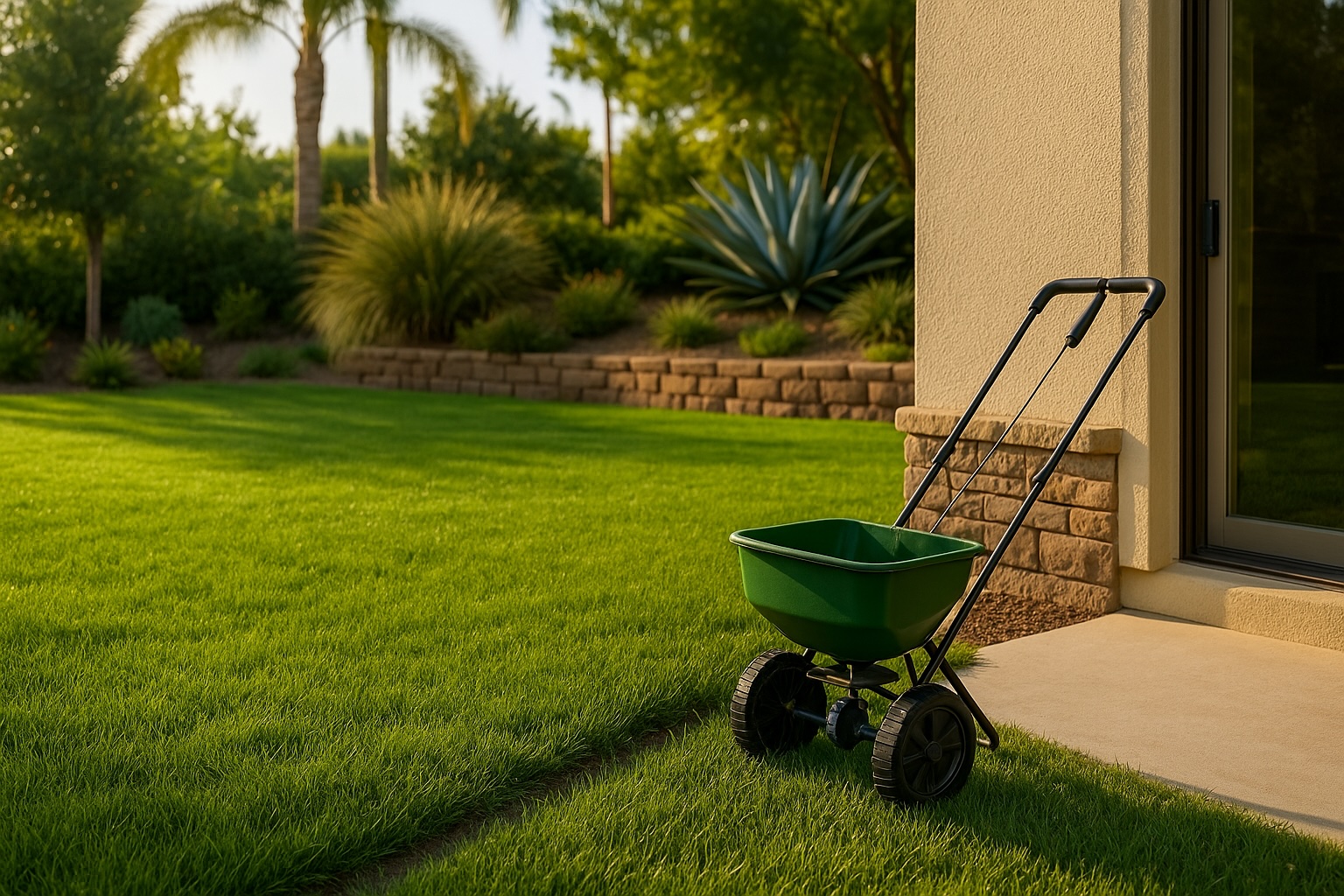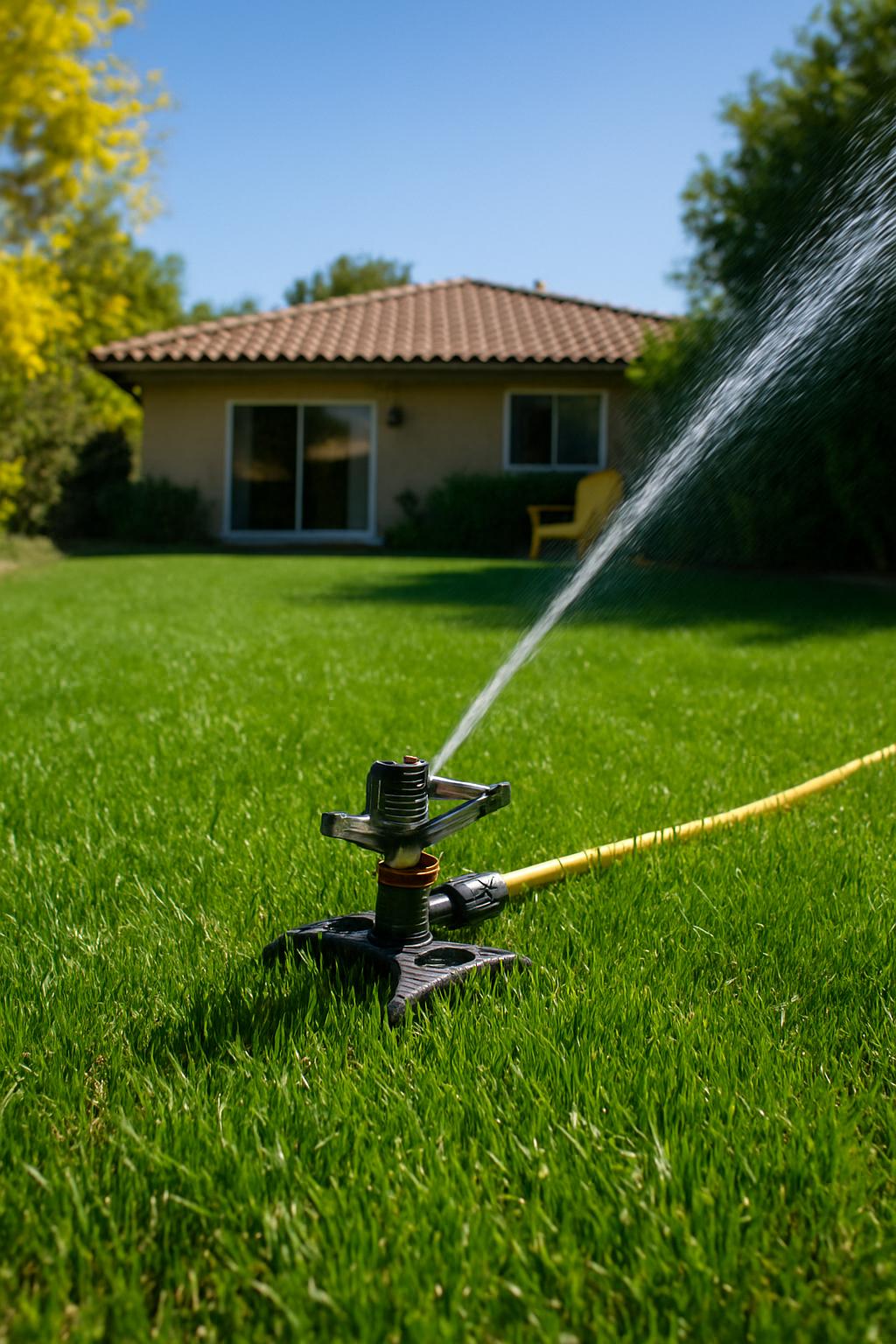If you want your Gilbert lawn to look its best through scorching summer months, spring is the perfect time to give it a boost. Proper fertilization helps your grass stay green, dense, and resilient to heat and drought—so timing and technique matter! Here’s how to make sure your lawn gets the nutrients it needs before Arizona’s hottest days arrive.

Why Timing Fertilizer Matters in the Arizona Spring
Fertilizing too early or too late can leave your lawn vulnerable. In Gilbert, the ideal time is late March to early May—when warm-season grasses like Bermuda and Zoysia are waking up, but before triple-digit temperatures stress the turf. This helps your grass develop deep roots and build up reserves for summer survival.
Choosing the Right Fertilizer for Gilbert Lawns
- Slow-Release Nitrogen: Choose a fertilizer labeled as “slow-release” or “controlled-release.” This feeds your grass gradually over several weeks and reduces the risk of burning.
- Balanced Nutrients: Look for an N-P-K ratio (nitrogen-phosphorus-potassium) like 15-5-10 or 20-5-5, unless your soil test says otherwise.
- Iron and Micronutrients: In high-pH desert soils, iron chlorosis (yellowing) is common. Consider a fertilizer with added iron for that deep green color.
How and When to Apply Fertilizer
- Wait until your lawn is at least 50% green and actively growing—usually late March through early May in Zone 9b.
- Mow your grass 1–2 days before applying fertilizer and remove clippings.
- Apply fertilizer evenly using a broadcast or drop spreader. Follow package instructions for rates and settings.
- Water your lawn deeply right after application to help nutrients soak in and prevent burning.
Watering After Fertilizing
Proper watering is just as important as fertilizer choice. Water deeply—at least 6 inches into the soil—right after you fertilize. Going forward, water less often but more deeply to encourage deep root growth and help your lawn handle summer drought.
Mistakes to Avoid
- Don’t fertilize dormant or brown lawns—wait until the grass is actively growing.
- Don’t over-fertilize—excess fertilizer can burn your grass and harm local waterways.
- Avoid fertilizing before heavy rain—nutrients can run off before they reach roots.
- Always follow local Gilbert water restrictions during and after fertilization.
Frequently Asked Questions
- What’s the best fertilizer for Gilbert lawns?
Slow-release, high-nitrogen products with iron are best for Bermuda and Zoysia lawns. Soil tests can help you dial in specific needs. - How often should I fertilize?
Once in spring (late March–early May), then again in early fall if needed. Avoid summer fertilizing. - Is organic fertilizer a good option?
Yes, organic fertilizers can work well—just choose one appropriate for lawns and follow label rates.



